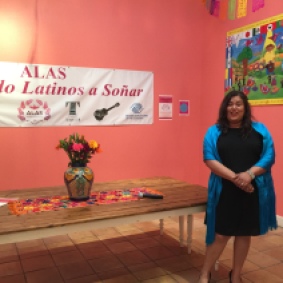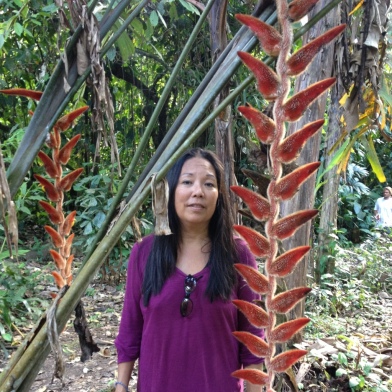I guess it is common to see your own art differently after it is up on the gallery walls. Stepping back to take some photos, I suddenly realized that all three pieces in the Generation Nexus: Peace in the Post-war Era Exhibition, were about my father, Kazumi Shintani.

I should not have been surprised since the exhibition is about victims of the US government’s concentration and confinement policies. The show is curated by Betty Nobue Kano and Janeen Antoine, who brought together artists of Japanese American and Native American heritage – Muriel Antoine, Fredrick Cloyd, Lucien Kubo, Emmanuel Montoya, Ruth Okimoto, Judy Shintani, Anthony Sul, and Hulleah Tsinhinjinne.
The exhibition is in the new historical Building 640 in the Presidio in San Francisco. The building was a secret Military Intelligence Service Learning Center, where Japanese American Soldiers were trained as military linguists in 1941, for the coming war.
I describe my work in this blog but decided to not show all of them, to just give you just a taste of what is in the show.
Portal The photo of my father, Kazumi Shintani, was taken in a farm field near the Tule Lake Segregation Center in Northern California. He spent his teenage years imprisoned there. At the time of the photo we had just concluded attending the Tule Lake Pilgrimage. It was the first time I visited this historic place that is so important to my family history and that of many other Japanese Americans too. The Pilgrimage was a time of healing, reflection, story telling, and acknowledgement for us and the other 300 attendees. In the photo my father is looking at a dilapidated barrack that originally was a home for some internees at the camp. The barracks were later removed and sold to returning vets to use for homes and barns. The wood from this barrack was offered to internee families before it was to be burned. My father and I scavenged some material for my future art making. It was a way to take a piece of painful history and transform it.

Pledge Allegiance The Tule Lake barrack wood represented a time when my father was imprisoned during his teenage years. I held on to the wood for 3 years. After much pondering, sketching and soul-searching, I decided to create an American flag. The pledge of allegiance phrase “with liberty and justice for all” rang hallow during the 1940’s when the US government forced the unconstitutional imprisonment of 120,000 men, women and children of Japanese ancestry into ten concentration camps. Tule Lake camp became a segregation and high security camp for internees who were labeled disloyal.
Currently many Japanese Americans, as well as other Americans, are alarmed about the state of citizen freedoms and racial profiling that is happening in the United States. It is an important time to stand up for our rights and make sure that history does not repeat itself.
Ancestor Chimes My father’s family settled in America and raised oysters in the Puget Sound. In this piece I honor these family members, most of who have passed on. On the oyster shells you will find their stories. Some of the ink may fade over time just as memories do. The shells dangle and move and our legacy travels to reach ancestors via the wind and the sound of bells. I imagine they are pleased to be reminded of the beautiful place they once inhabited. Their livelihood and time in Washington was cut short when they were unjustly forced to move out of the area due to their ethnicity and the war. They spent 4 years in the Tule Lake Concentration Camp. 65+ years later my father recalls happy times of living on a houseboat in Washington and enjoys bringing his children to visit his childhood locale.
The exhibition opens November 17, 2013, 1-3pm with All Nations Singers, Medicine Warriors Dancers, and Genyukai Okinawan music and shiisa.
Other events include:
November 23, 1 – 4pm Artist Panel
December 22, 1 – 3:30pm Winter Solstice Celebration performance by Harupin-Ha, Butoh Dance
February 1, 2014, 12 – 2pm Children’s Craft Workshop with Judy Shintani and Anthony Sul
March 1, 2014, 1 – 3:30pm EO 9066 Event: Film on Black Japanese Life
April 27, 2014, 1 – 3:30pm Ohlone inthe Presidio: Closing Ceremony, Pomo/Ohlone Dancers, Shellmound Walk
For more information: www.njahs.org

















